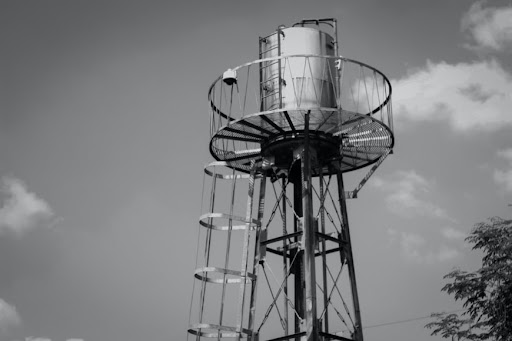The Need and Significance of Floor Screeds
When laying tiles or overlaid or vinyl flooring it is important to utilize Floor Screeds if the underlying floor isn’t level.
When in doubt the floor surface ought not to differ by more than 5mm per 3 meters. The screed’s main role, utilizing one section of cement to three to five sections of sharp sand, is to give a smooth and level floor on which to lay your picked floor finish.
The thickness of the Floor Screeds permits it to take up typical varieties in evenness and levelness of the base on which it is laid. The normal sorts of flooring laid over an evening out Floor Screeds incorporate rug and rug tiles, tile, cover and vinyl flooring and tiles, wooden squares, and clay tiles.
Evening out screeds is not planned to go about as a wearing surface and ought to consistently be covered with the last floor finish. A screed is additionally the favored medium when laying underfloor warming.
Best practice suggests that to stay away from development issues, screeds ought not to cover a space of more than 40m² or a distance any one way more than 8m.
Development joints ought to partition bigger screed regions. Then again, you can put an enemy of break network in the screed or include filaments along with the actual blend.
Dangers of Lacking Screed Plan
As per the Substantial Center (UK), the primary danger of disappointment for a reinforced screed is debonding from the substrate. Reinforced screeds by and large depend on the substrate for strength, so debonding will probably prompt breaking and potential displacement of the screed.
The primary danger for unbonded screeds (additionally as indicated by the Substantial Center) is twisting and lifting. Twisting and lifting can upset the waterproofing and floor covers, antagonistically influence falls, actuate breaking in connecting building components, and cause lopsidedness in floor surfaces. Use Plaster Machine for time-consuming plasterwork.
Different dangers or kinds of disappointment because of disregarded screed configuration include:
- Inordinate shrinkage breaking
- Extension breaking and delamination of floor screeds
- Disintegrating
- Harm to waterproofing layers
- Scraped area and wear
- Lacking falls and ponding water
- Resistant statures/levels of encompassing components like balustrades, entryway edges, and so on
- Over-burdening the supporting chunk
- Extreme blossoming draining
- Differential development breaking –, for example, delivered chunk edges
Configuration Related Reasons for Screed Disappointment
Most screed disappointments are a result of helpless establishment works on, as per Flowcrete. Notwithstanding, it is significant that the specifier assumes their part in endeavor the important due constancy to keep away from configuration-related deformities.
It is simple for the specifier to reorder a past detail or to put the onus on the worker for hire to plan the specifics of the screed. Shockingly, the installer isn’t able to recognize all the significant plan contemplations exceptional to the undertaking, nor does he presumably care.
For instance, it shouldn’t be up to the screed installer to decide the expected shrinkage in the substrate, avoidance in a cantilevered substantial chunk, or then again if the screen turns out to be in the solitary area that a 20-ton crane can gain admittance to supplant the cooling unit in 20 years. All of which could cause screed disappointment in the short, medium, or long haul separately.
Insufficient strength
Insufficient strength is, in my experience, most ordinarily an aftereffect of over-the-top sand to cement plaster or potentially poor on-location blending rehearses. It can prompt disappointment or disintegrate under load once in assistance. I have by and by been engaged with projects where the completed screed was similar to a youngsters’ sandpit.
It is reasonable to specify both the necessary blend plan and a base ostensible strength prerequisite in the detail.
Indicating a blend proportion will lessen disarray nearby by not putting the onus on the installer to decide the blend proportion – he won’t consider his neighborhood substantial technologist to work out what the blend configuration ought to resemble to accomplish that strength. He will simply make a most realistic estimation of what the blend proportion ought to resemble and continue undelayed. This can prompt issues as his most realistic estimation is doubtlessly off-base.
Where tiles are to be utilized for standard private applications, the blend proportion is frequently in the scope of 1:3 to 1:5 (cement: sand). Nonetheless, this reach is often too feeble and the last proportion will rely upon the application, administration conditions, and floor covers. For instance, such a blend configuration is excessively frail and along these lines not reasonable for tough flooring frameworks, as ARDEX brings up in their specialized release Issues with Sand-Cement Screeds as Substrates for Non-Fired Tile Flooring Frameworks.
The strength prerequisite ought to be gotten from the expected most pessimistic scenario administration conditions. For instance, is the screed going to have any plant traffic during support? Or on the other hand, is truck access required over the screeded region during development?
The specifier should begin by distinguishing all utilization cases including during all periods of the structure’s lifecycle: development, activity, and upkeep. Working in reverse, the necessary screed strength can be distinguished.
Recall that the highest point of the screed bed is normally the most fragile as the water and fine total ascents to the top. This ought to be considered related to water-cement proportion to decide the normal strength of the surface, not simply the normal strength of the entire screen.
Guarantee any specifications in the detail can be upheld on location during development as a feature of the QA cycle. It is ideal to think the QA interaction through from the start as it will direct what should be remembered for the detail
It is likewise a smart thought to indicate the necessity for blending to be attempted by an electric blender. This will limit the odds of restricted flimsy points because of high sand focuses, a typical issue with sandy screeds.
Inability to control shrinkage
Shrinkage control is especially significant when managing a huge region, for example, a rooftop deck, air terminal, or plant floor.
Shrinkage happens as water in the blend drains out of the cement glue and vanishes. Long haul evaporating shrinkage can proceed for to 3 or 4 years which can break the screed and any floor covers well get-togethers.
Lifting and twisting of the screed happen because of shrinkage differentials through the thickness of the screen. This is typical because the top surface drying out quicker than the layers underneath from dissipation. Subsequently, the top surface layer agreements and lifts the edges of the screen.
Different strategies for diminishing the impacts of shrinkage include:
Determining explicit areas of compression/control joints: AS 3958.1 suggests development joints be put at around 4.5 m stretches. Be that as it may, this is very broad and in actuality, withdrawal/control joints ought to be planned with some idea. For instance, where there is an unpredictable shape or an opening in the screed, a control joint or a few control joints might be needed to ease the anxieties that create at the corners.
The placement of joints is too imperative to ever be left to the installer. As the Tile Board of North America’s (TCNA) Handbook for Earthenware, Glass, and Stone Tile Establishment states:
“The plan professional or architect will show the particular areas and subtleties of development joints on project drawings.”









